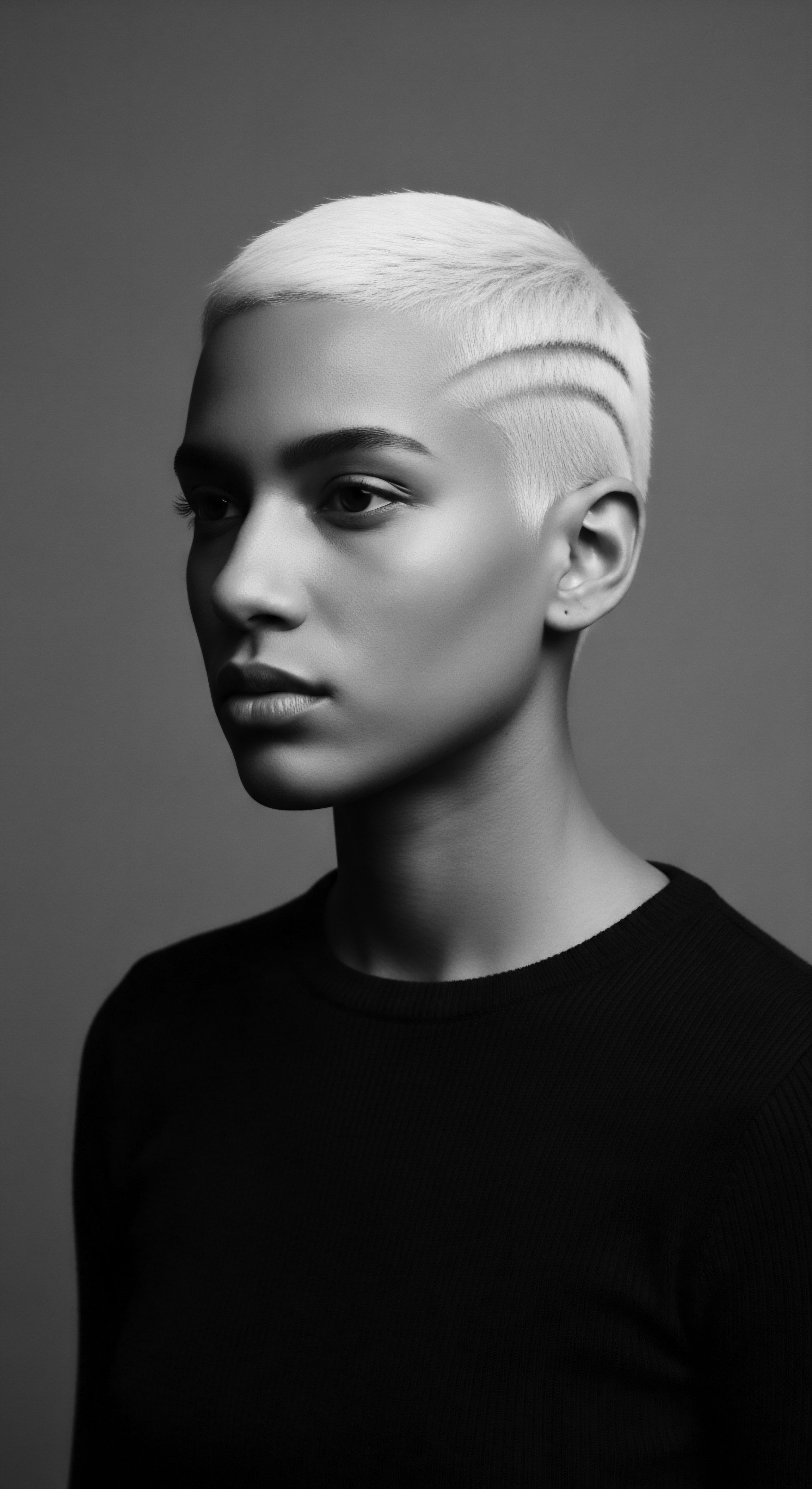
Fundamentals
The concept of the ‘Cold Wave’ stands as a significant marker in the continuum of human hair modification, a method developed to alter the natural disposition of hair strands. At its fundamental core, this process represents a chemical restructuring of the hair’s inherent form, enabling the creation of lasting curls or waves without the application of external heat. This advancement, first introduced in 1938 by Arnold F. Willatt, marked a departure from earlier, more cumbersome, and often perilous thermal methods that relied on heated machines and lengthy salon visits.
Before the advent of the Cold Wave, permanent hair alterations typically involved elaborate setups where hair was wrapped around rods connected to electrically heated machines, a process that could span many hours and posed risks of scalp burns. The Cold Wave brought a remarkable shift, simplifying the experience and making permanent waving more accessible. Its fundamental appeal lay in its heatless approach, relying purely on the potent interaction of chemicals to reshape the hair. This method provided an easier, less time-consuming pathway for individuals seeking to change their hair’s natural wave pattern.
The Cold Wave, at its simplest, democratized hair texture alteration by removing the need for oppressive heat, relying on chemical ingenuity instead.
For communities whose hair traditions are deeply interwoven with identity, the advent of any new method to reshape strands carries immense historical and cultural weight. From ancient times, hair has been a canvas for expression, a marker of status, and a connection to lineage, a legacy that extends through countless generations. Whether through intricate braids, coils, or elaborate adornments, the manipulation of hair has always held a special significance, a reflection of individual and communal spirit. Understanding the Cold Wave means understanding how scientific innovation intersects with these age-old aspirations for self-presentation and communal belonging.
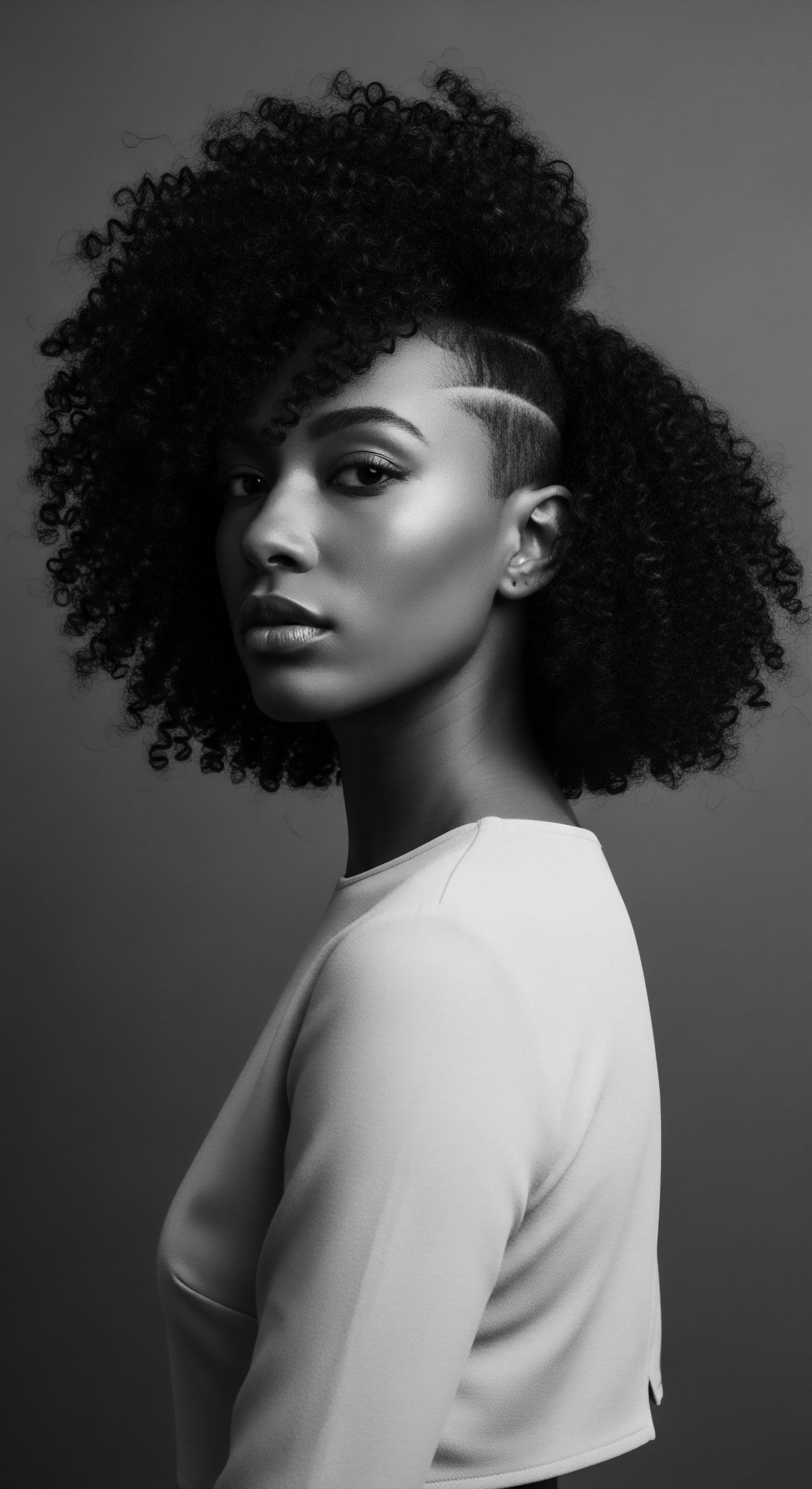
The Shift from Heat to Chemistry
Prior to the Cold Wave, attempts to induce permanent changes in hair texture were often rudimentary and physically demanding. Early innovators like Karl Nessler, in the early 1900s, experimented with heated rods and chemical pastes, creating processes that were lengthy and somewhat unpredictable. These procedures, while groundbreaking for their time, often demanded a full day at the salon, with clients tethered to bulky machines.
The Cold Wave, through its chemical reliance, eliminated this physical tether, bestowing a new freedom upon the hair-altering experience. The chemical basis of this process involved the application of a reducing agent, typically ammonium thioglycolate, which acted upon the disulfide bonds within the hair.

Ancestral Echoes in Modern Innovation
Even as technology advanced, echoes of ancestral practices remained. Historically, communities across the African diaspora understood the profound impact of environment and ingredients on hair’s vitality. They utilized natural butters, botanical blends, and intricate styling to protect and maintain hair health, a wisdom passed down through generations.
While the Cold Wave was a product of modern chemistry, its essence – the desire to sculpt and present hair in a particular way – resonates with these enduring human traditions of hair care and self-expression. It added a new tool to humanity’s long-standing toolkit for hair transformation, a tool that, in its subtle chemistry, still spoke to the deeper human longing to articulate identity through one’s crown.
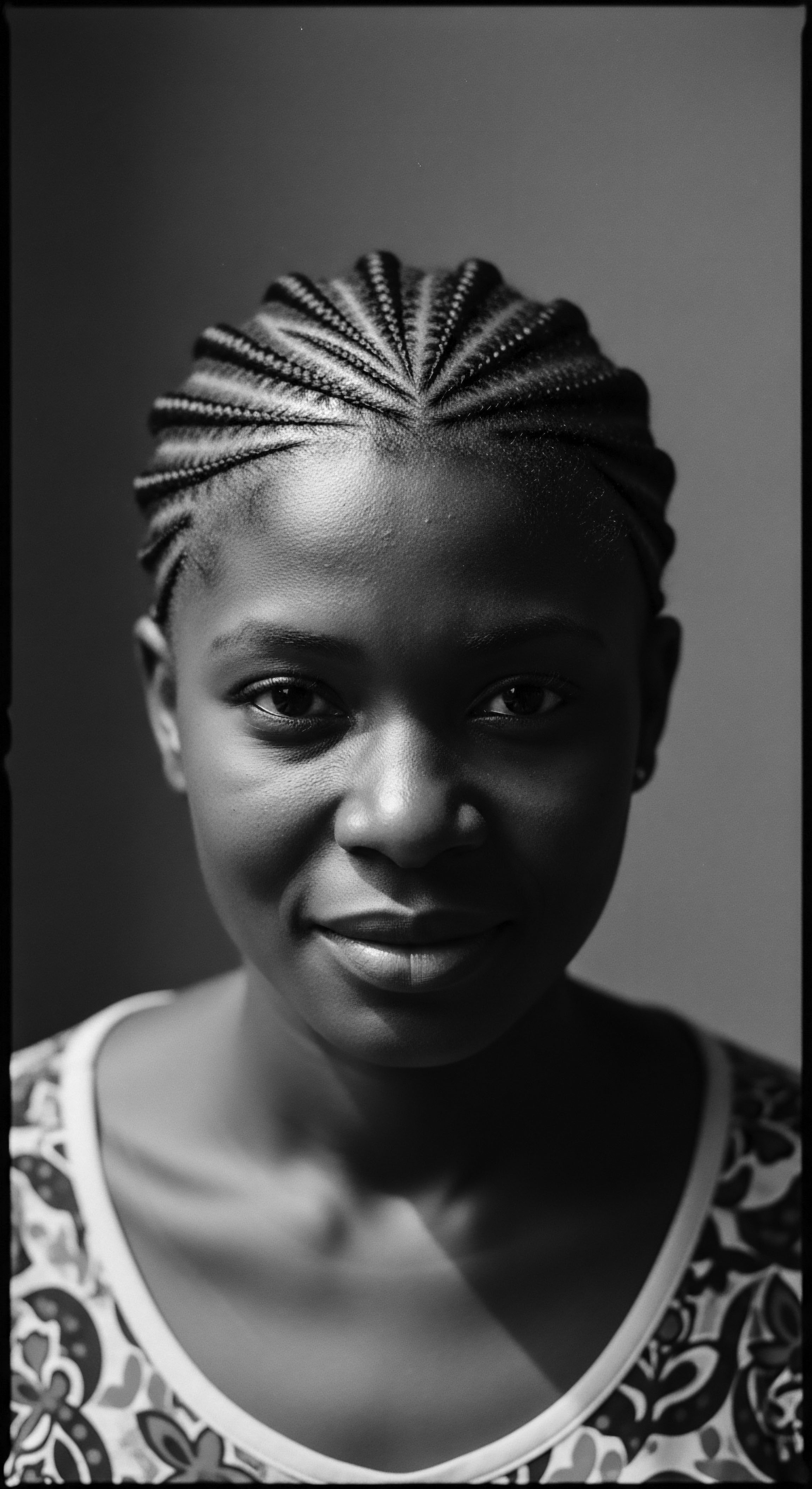
Intermediate
Moving beyond its fundamental understanding, the Cold Wave represents a pivotal moment in the scientific comprehension of hair structure and its malleability. This chemical process, distinct from its thermal predecessors, operates by carefully altering the very architecture of the hair strand. Hair, in its biological essence, is composed primarily of a protein called Keratin.
The unique shape and resilience of a hair strand, dictating whether it manifests as straight, wavy, or tightly coiled, are significantly determined by the arrangement of bonds within this keratin structure, particularly Disulfide Bonds. These bonds act as internal scaffolding, holding the hair’s natural configuration in place.
The intermediate meaning of the Cold Wave thus hinges upon its biochemical mechanism. A reducing agent, such as Ammonium Thioglycolate, is applied to the hair, penetrating the cuticle and breaking down these disulfide bonds. Once these bonds are disrupted, the hair becomes pliable, allowing it to be reshaped around perm rods.
A second solution, an oxidizing agent (often hydrogen peroxide), is then applied to re-form these bonds in their new, desired curled configuration. This two-step chemical dance permanently alters the hair’s structure, allowing it to retain the new wave or curl pattern until it grows out or is chemically altered again.
The Cold Wave’s true ingenuity lay in its sophisticated manipulation of hair’s disulfide bonds, offering lasting texture transformation without the need for heat.
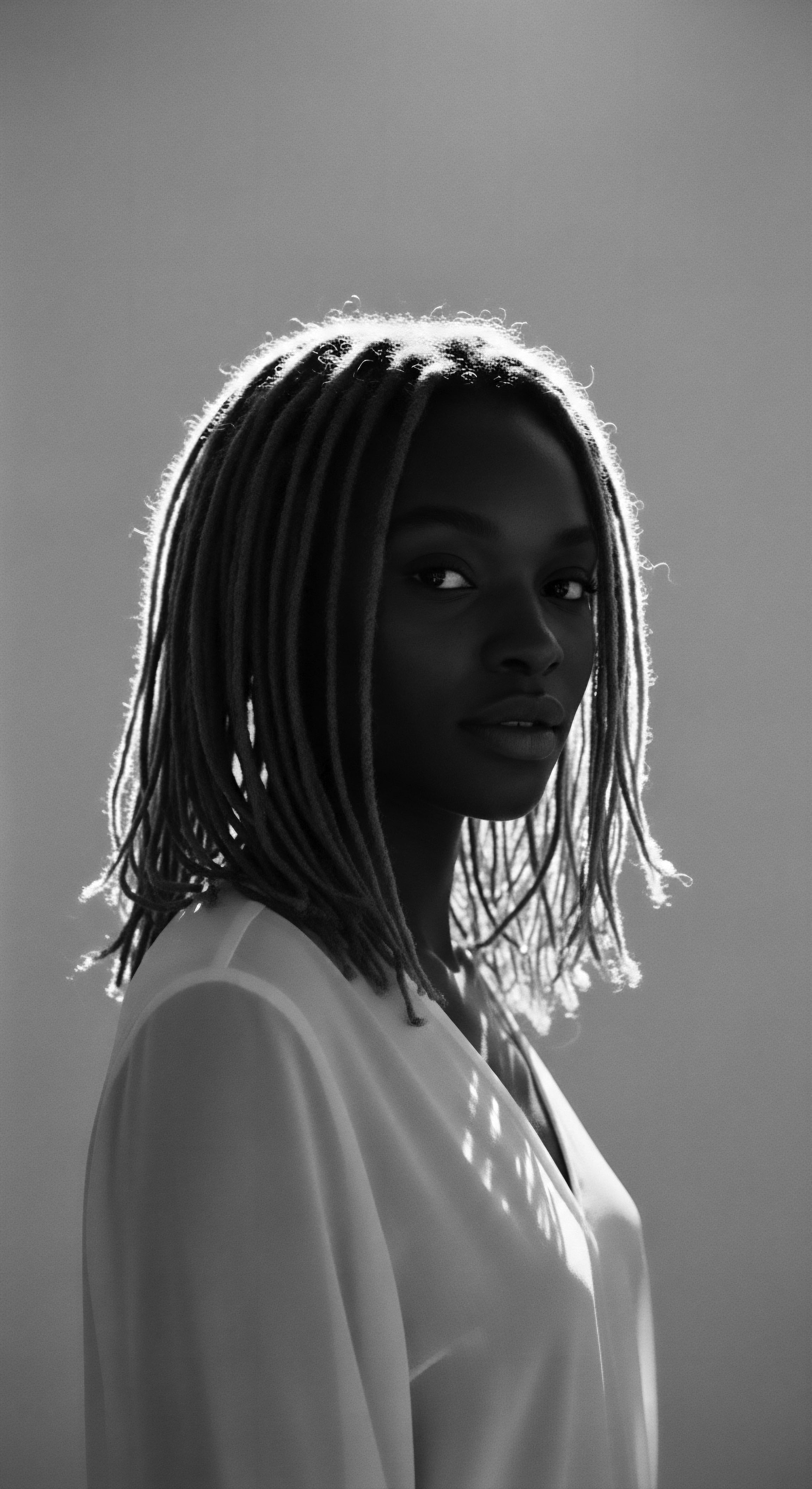
Chemical Kinship with Hair Straighteners
While the Cold Wave was primarily associated with creating curls, its underlying chemical principles share a profound kinship with treatments designed to straighten hair, commonly known as relaxers. Both processes involve the chemical disruption and reformation of disulfide bonds to achieve a new hair texture. This shared scientific foundation created a common language in hair chemistry, impacting how hair modification was understood and practiced across various communities, including those with richly textured hair.
The earliest chemical straighteners, such as the one refined by Garrett A. Morgan in the early 20th century, also worked by altering hair’s inherent structure, albeit with different, often harsher, chemical formulations like lye.
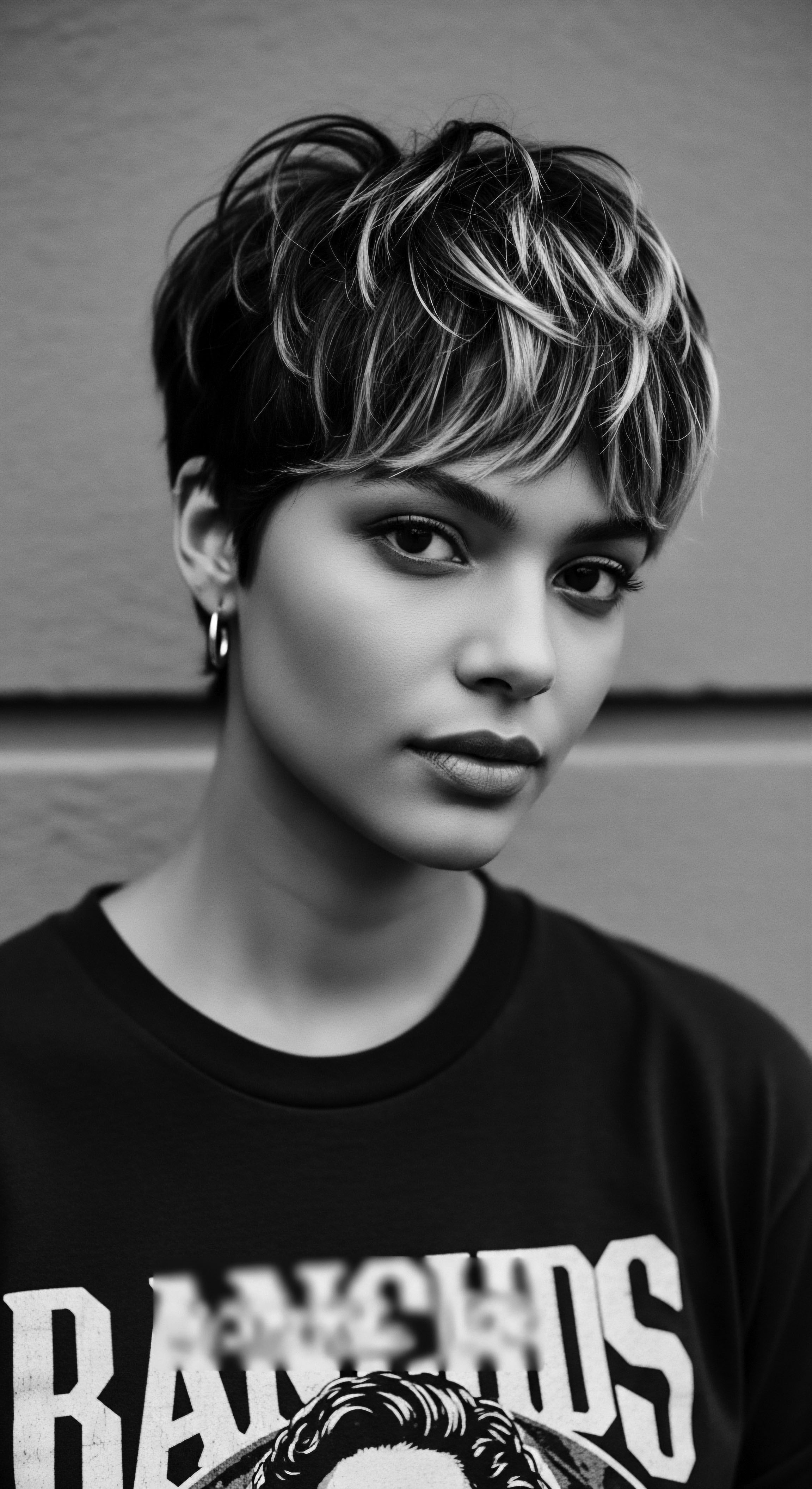
Societal Pressures and Hair Alteration
The societal landscape into which such chemical innovations arrived, particularly for Black and mixed-race communities, was fraught with complex pressures. Following emancipation, and indeed throughout the 20th century, straightened hair was often associated with social acceptance and economic opportunity within a society that largely favored Eurocentric beauty standards. The desire to conform, or to simply navigate a world where natural Black hair was frequently misunderstood or even discriminated against, led many Black women to embrace methods like hot combs and chemical relaxers.
- Historical Context ❉ The quest for straightened hair was deeply intertwined with the struggle for social mobility and racial integration, representing a complex response to prevailing beauty norms.
- Economic Imperative ❉ Access to certain jobs or educational institutions sometimes felt contingent upon adopting hairstyles deemed more “professional,” often equating to straighter textures.
- Cultural Dialogue ❉ The adoption of chemical processes became part of a larger, evolving dialogue within Black communities about beauty, identity, and adaptation in a world that often failed to celebrate diverse hair textures.
Therefore, while the Cold Wave was initially marketed for adding curl, its very existence as a viable chemical texturizing process opened doors to understanding how chemical hair modification could be refined and applied, influencing the development and widespread use of other chemical agents, including those that achieved significant straightening effects for Afro-textured hair. The science behind the Cold Wave, though focused on curling, provided conceptual and technological pathways for the broader chemical alteration of hair, impacting how textured hair was styled and perceived in the pursuit of various aesthetic and social objectives.
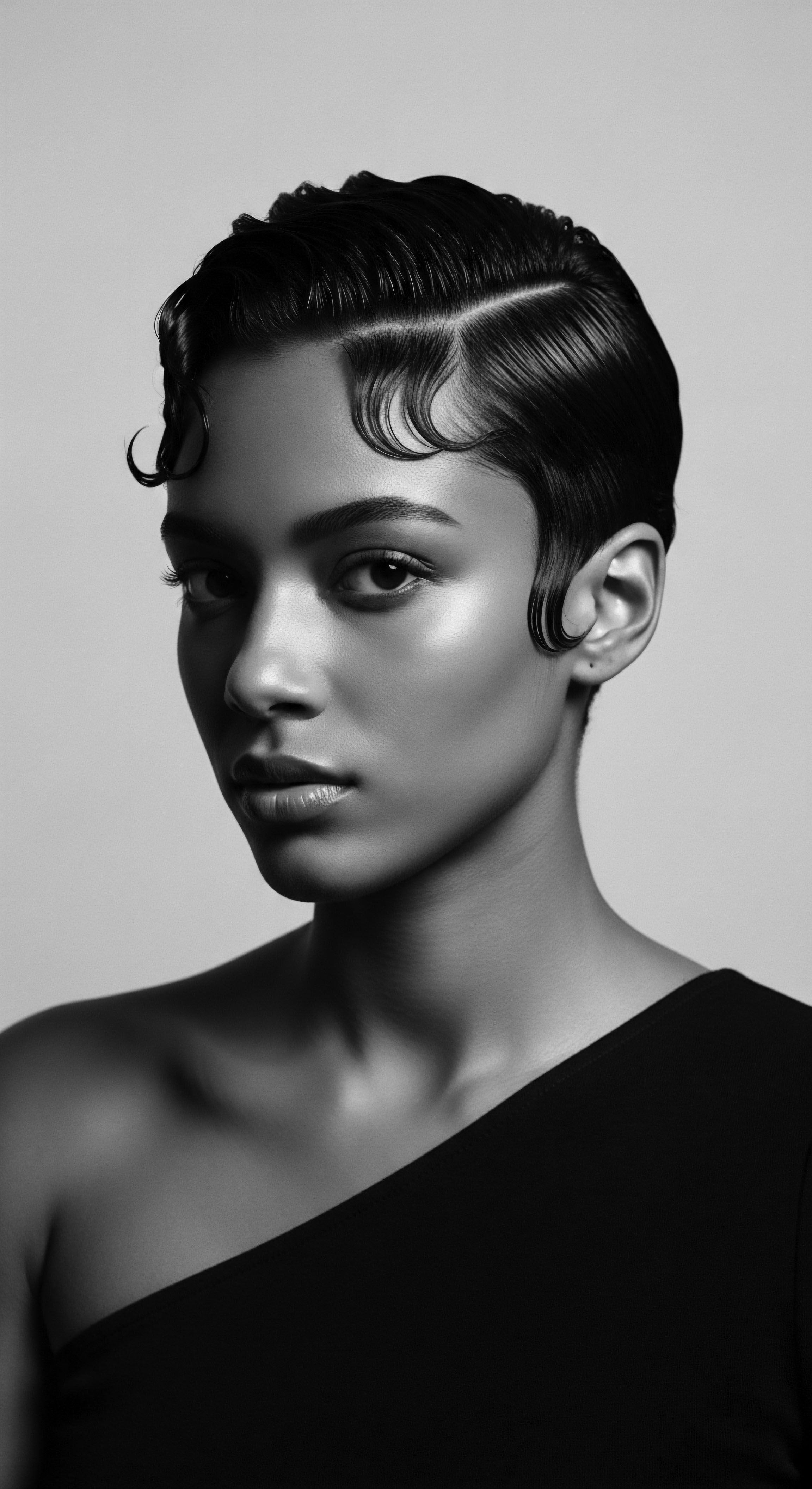
Academic
The ‘Cold Wave,’ within an academic framework, is not merely a historical footnote in cosmetology; it stands as a significant chemico-structural intervention in the keratinous architecture of hair, a paradigm shift from thermally-dependent methods to a purely reductive-oxidative chemical process for inducing lasting textural change. Its designation as “cold” underscores the absence of external heat application, distinguishing it sharply from Karl Nessler’s earlier inventions which required cumbersome, heated machinery that often risked burns to the scalp and hair itself. The scientific elucidation of the Cold Wave centers on the precise manipulation of Disulfide Bonds within the hair’s cortex, a network of covalent linkages critical to a strand’s structural integrity and inherent curl pattern.
Specifically, the meaning of the Cold Wave is defined by its two-phase chemical reaction. The first phase employs a reducing agent, typically Ammonium Thioglycolate, at an alkaline pH. This compound works by breaking the strong disulfide bonds (-S-S-) in the hair’s keratin proteins, converting them into sulfhydryl groups (-SH). Once these bonds are fractured, the hair’s polypeptide chains, previously fixed in their natural conformation, become pliable.
The hair is then mechanically reshaped around rods, coils, or rollers to the desired new curl or wave configuration. The second phase involves the application of an oxidizing agent, usually hydrogen peroxide, which re-forms the disulfide bonds in their new, reshaped positions. This re-bonding locks the hair into its new texture, rendering the change semi-permanent until the hair grows out or is subjected to further chemical processes. This precise chemical dance underpins the Cold Wave’s profound effect on hair morphology.
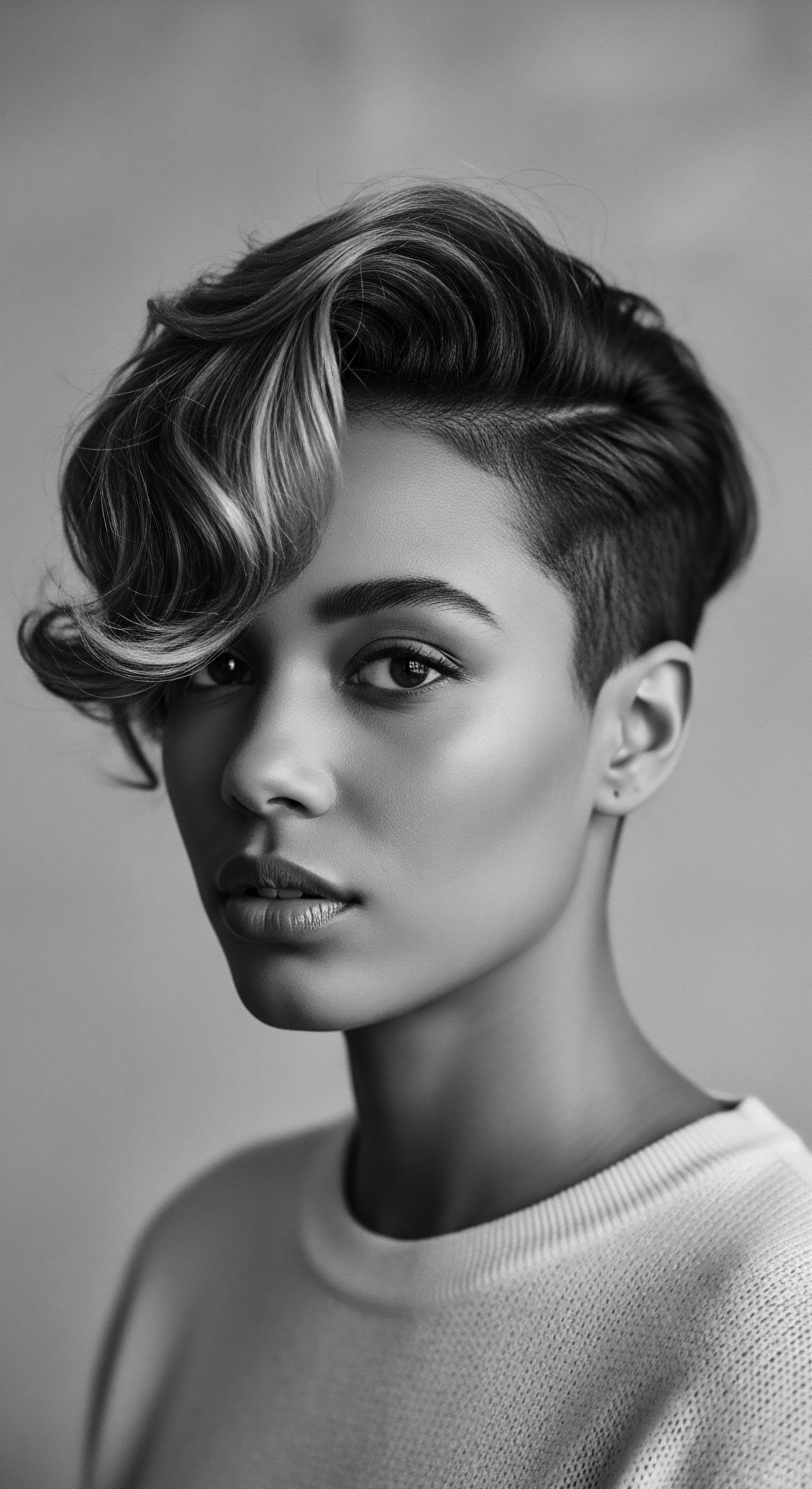
Echoes from the Source ❉ Hair’s Ancestral Blueprint and Chemical Interventions
To truly grasp the academic meaning of the Cold Wave, particularly in its relation to textured hair heritage, one must appreciate the deep-seated biological and cultural significance of hair. Human hair texture is not merely a random trait; it is a profound evolutionary adaptation. Tightly coiled hair, prevalent among individuals of African descent, is believed to have developed as a protective mechanism against intense ultraviolet (UV) radiation, allowing for better scalp ventilation and protection in equatorial climates. The very structure of Afro-textured hair, characterized by its elliptical follicle shape and varied shaft diameter, contributes to its unique coiling patterns but also, in some cases, to its fragility and propensity for breakage at points of weakness.
Against this backdrop of ancestral biology, chemical interventions like the Cold Wave, and critically, relaxers, emerged within a complex socio-historical narrative for Black and mixed-race communities. Post-emancipation, the relentless pressure to assimilate into Eurocentric beauty ideals profoundly shaped hair practices within the African diaspora. Straighter hair became, for many, a perceived pathway to social acceptance, economic advancement, and a shield against discrimination. This societal impetus fueled the demand for hair-altering products and techniques.
Consider the profound implications of this historical context, a stark reminder of the enduring societal pressures that influenced hair choices. A 2023 survey study revealed that among Black respondents, who reported the most frequent use of chemical straighteners compared to other racial groups, an alarming 61% Stated They Used These Treatments Because They “felt More Beautiful with Straight Hair.” (American Academy of Dermatology Association, 2023, p. 2) This statistic is not just a number; it speaks volumes about the internalized beauty standards and the emotional toll exacted by a society that historically devalued natural Black hair. It underscores how scientific advancements, even those like the Cold Wave intended for general curling, existed within a contested terrain for textured hair, where chemical alteration was often a response to external expectations rather than solely an aesthetic choice.
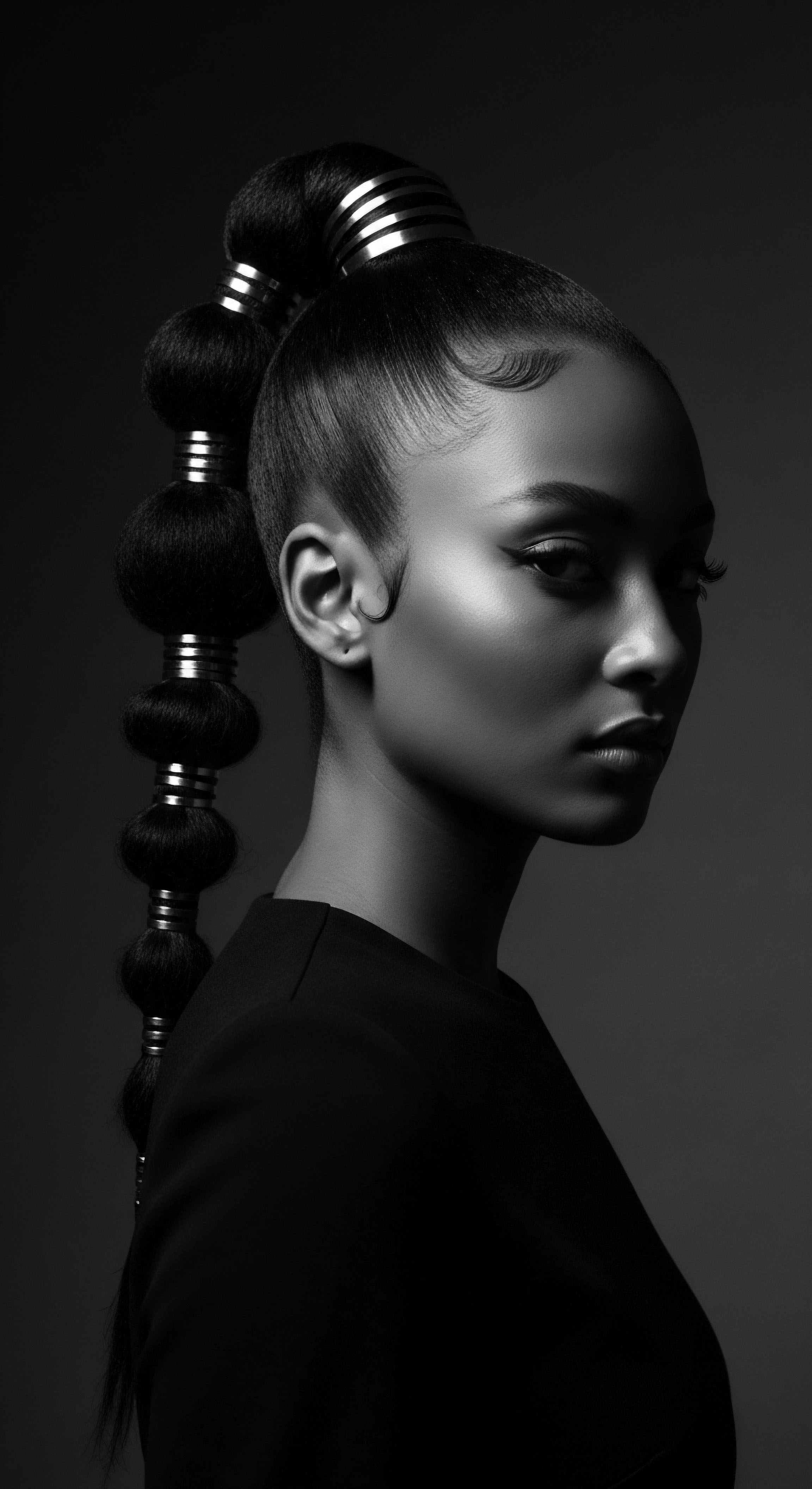
The Interconnectedness of Chemical Alteration and Identity
The introduction of the Cold Wave in 1938, as a heatless and more accessible chemical process, inadvertently broadened the conceptual and practical landscape for all chemical hair alterations. While the Cold Wave itself was designed to add curls, the underlying chemical ingenuity—the precise breaking and re-forming of disulfide bonds—was a shared scientific language with chemical relaxers. This period saw a proliferation of chemical products aimed at hair modification. Garrett A.
Morgan, an African American inventor, had already introduced a chemical hair straightener in 1909, initially for men, which gained popularity. His invention, though a relaxer, paralleled the Cold Wave in its chemical intent to permanently change hair texture.
The Cold Wave, with its reduced processing time (from 6-8 hours to 2 hours) and elimination of heavy machinery, made chemical hair manipulation more palatable and less daunting for salon patrons. This increased accessibility, even if for curling, likely contributed to a wider acceptance of chemical alterations of hair structure in general. For Black women, the widespread availability and conceptual simplification of chemical processes, even if their primary goal was straightening, contributed to a climate where chemically altered hair was a readily available option.
The evolution of hair care within the Black community is a rich archive of resilience, ingenuity, and profound cultural negotiation. Early Black entrepreneurs like Madam C.J. Walker and Annie Turnbo Malone revolutionized the industry by creating products specifically for Afro-textured hair, though often promoting styles that involved straightening.
Later, figures like Marjorie Joyner, an African American hairdresser, patented a permanent wave machine in 1928, explicitly stating its application for “the hair of both white and colored women,” highlighting the cross-cultural ambition of such innovations. The Cold Wave, arriving a decade later, further solidified chemical manipulation as a central pillar of hair styling.
From an academic perspective, the Cold Wave’s significance extends beyond its technical definition to its societal ripples. It coincided with periods where Black hair was a site of intense political and social discourse. The Civil Rights Movement of the 1960s saw a powerful resurgence of natural hairstyles—Afros, braids, and locs—as potent symbols of racial pride and defiance against Eurocentric norms. This historical pendulum swing, from pervasive chemical straightening to the embrace of natural textures, provides a vital context for understanding how technological advancements like the Cold Wave are never isolated, but rather embedded within broader cultural movements and struggles for identity.
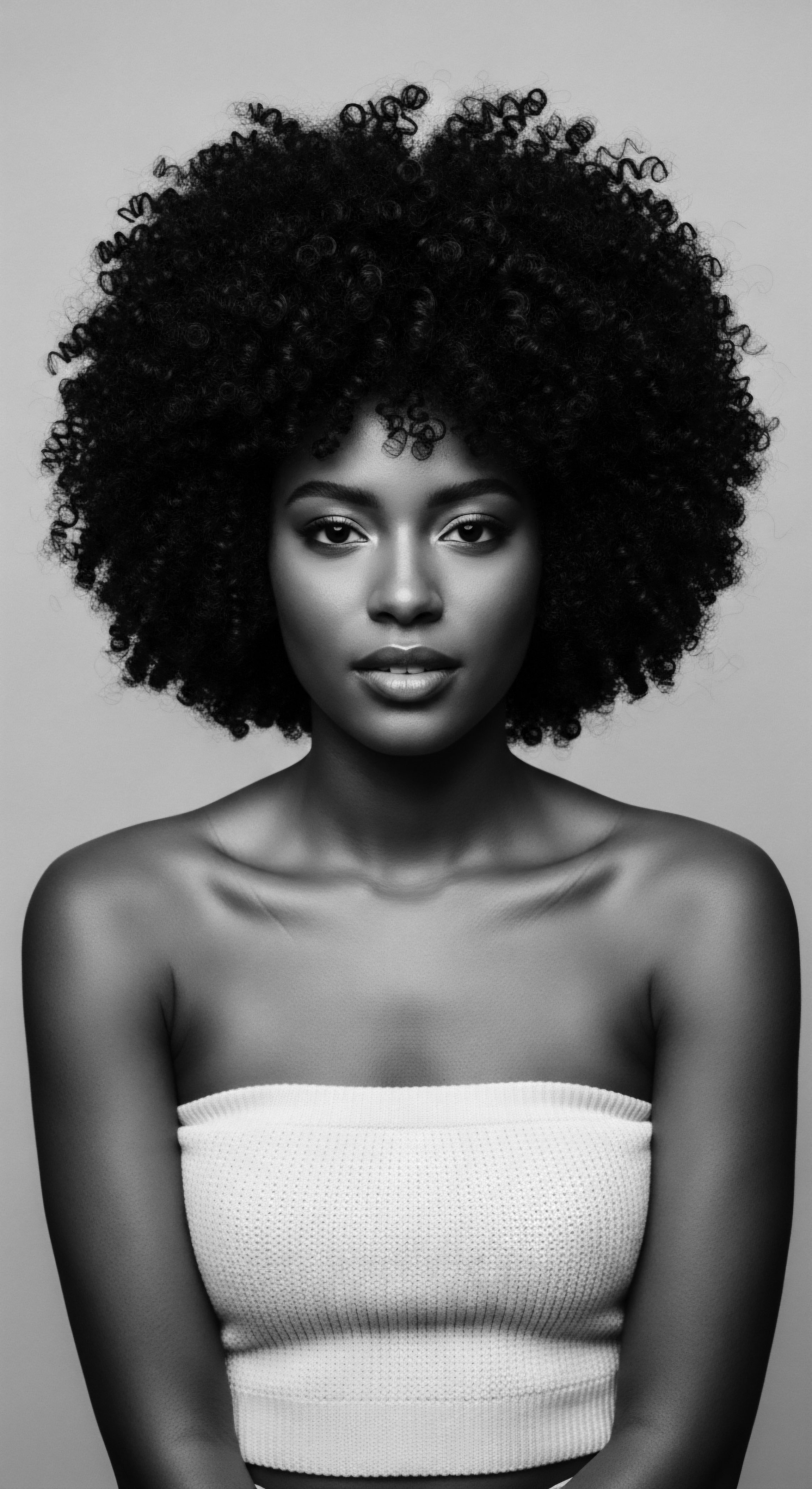
Intergenerational Perspectives and Hair Health
The enduring meaning of the Cold Wave, within this heritage-centric lens, is multifaceted. It prompts a deeper examination of the long-term consequences of chemical interventions on textured hair. While the Cold Wave was less damaging than its thermal predecessors, repeated chemical processing, including relaxers, has been associated with various dermatologic concerns disproportionately affecting Black women, such as traction alopecia and central centrifugal cicatricial alopecia. This raises crucial academic questions about the ethics of beauty practices and the responsibility of hair science to prioritize hair health alongside aesthetic desires.
The continued scholarly discourse on hair texture, identity, and the impact of chemical treatments reflects a growing recognition of hair as a complex biological entity intertwined with profound cultural narratives. The Cold Wave, as a milestone in chemical hair alteration, serves as a case study in how scientific innovation, even when seemingly neutral, becomes deeply imbued with social and cultural implications, particularly for communities whose hair has long been a canvas for both oppression and powerful expression.
| Era/Development Late 19th – Early 20th Century ❉ Thermal Permanent Waves (Nessler) |
| Cold Wave Significance Precursor to permanent texture alteration, but cumbersome and high-heat. |
| Impact on Textured Hair Heritage Inspired early African American innovators like Marjorie Joyner to seek safer permanent wave solutions. |
| Era/Development 1909-1913 ❉ Garrett A. Morgan's Chemical Hair Straightener |
| Cold Wave Significance Independent chemical innovation, parallel to the emerging concept of chemical texturizing. |
| Impact on Textured Hair Heritage Established a market for chemical alteration for straightening Afro-textured hair, driven by Eurocentric beauty standards. |
| Era/Development 1938 ❉ Introduction of the Cold Wave (Willatt) |
| Cold Wave Significance Revolutionized perming with heatless chemical method (ammonium thioglycolate). |
| Impact on Textured Hair Heritage Increased accessibility and reduced time for chemical hair alteration, influencing the broader landscape of chemical hair processing, including relaxers. |
| Era/Development 1960s ❉ Black Power Movement |
| Cold Wave Significance Coincided with a powerful rejection of chemical straightening in favor of natural Afro styles. |
| Impact on Textured Hair Heritage Hair became a symbol of Black pride and resistance, shifting the cultural narrative around textured hair away from assimilation. |
| Era/Development 2000s-Present ❉ Natural Hair Movement |
| Cold Wave Significance Ongoing re-evaluation of chemical processes and their impact on hair health. |
| Impact on Textured Hair Heritage Prioritizes natural textures, challenges Eurocentric beauty standards, and encourages a holistic approach to hair care rooted in ancestral wisdom. |
| Era/Development The journey of chemical hair alteration reflects a continuous interplay between scientific discovery and the profound social and cultural forces shaping identity within Black and mixed-race communities. |
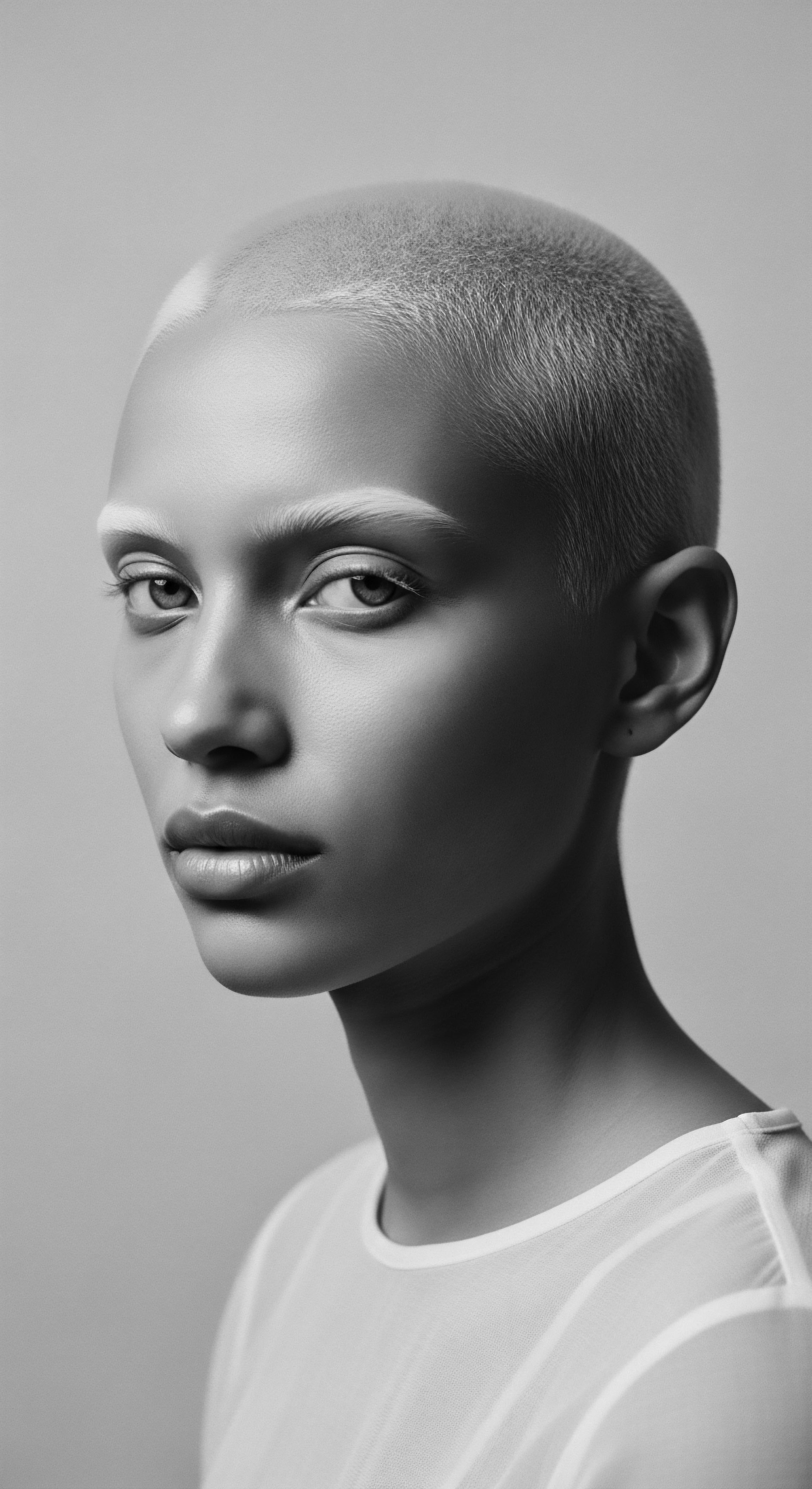
Reflection on the Heritage of Cold Wave
The Cold Wave, a testament to human ingenuity in chemistry, invites us to reflect deeply upon the enduring heritage of textured hair and the profound ways in which it has navigated, adapted, and celebrated its unique story. Its presence in our shared hair history, even if not directly synonymous with the journey of every coiled or kinky strand, reminds us that the desire to reshape, adorn, and express through hair is an ancient human impulse. For those of us rooted in Black and mixed-race traditions, hair has always been far more than mere aesthetics; it has served as an archive, a language, a symbol of resistance, and a cherished connection to ancestral wisdom.
The very notion of altering hair, whether through the heat of ancient styling tools or the chemical precision of a Cold Wave, speaks to a continuous dialogue between our natural selves and the external world. Our ancestors, with their deep understanding of botanicals and meticulous braiding techniques, engaged in a form of hair alchemy, not to conform, but often to protect, to signify, and to celebrate. These practices, honed over millennia, reveal a deep respect for the hair’s inherent vitality and its powerful narrative capacity.
In considering the Cold Wave, we find ourselves tracing a lineage of care, resilience, and self-determination. It prompts us to honor the countless hands that have touched and tended to hair, from the communal styling sessions in ancient African villages to the bustling salons where chemical solutions once promised a different kind of freedom. Today, as we stand in the rich current of the natural hair movement, there is a renewed reverence for what grows directly from our crowns.
This reverence is not a rejection of progress or a dismissal of history, but rather a soulful homecoming, a reclaiming of ancestral beauty, and a powerful statement of self-acceptance. The unbound helix of our hair, in all its myriad textures, continues to spin stories of past, present, and future, reminding us that true beauty blossoms from a place of profound understanding and self-love.
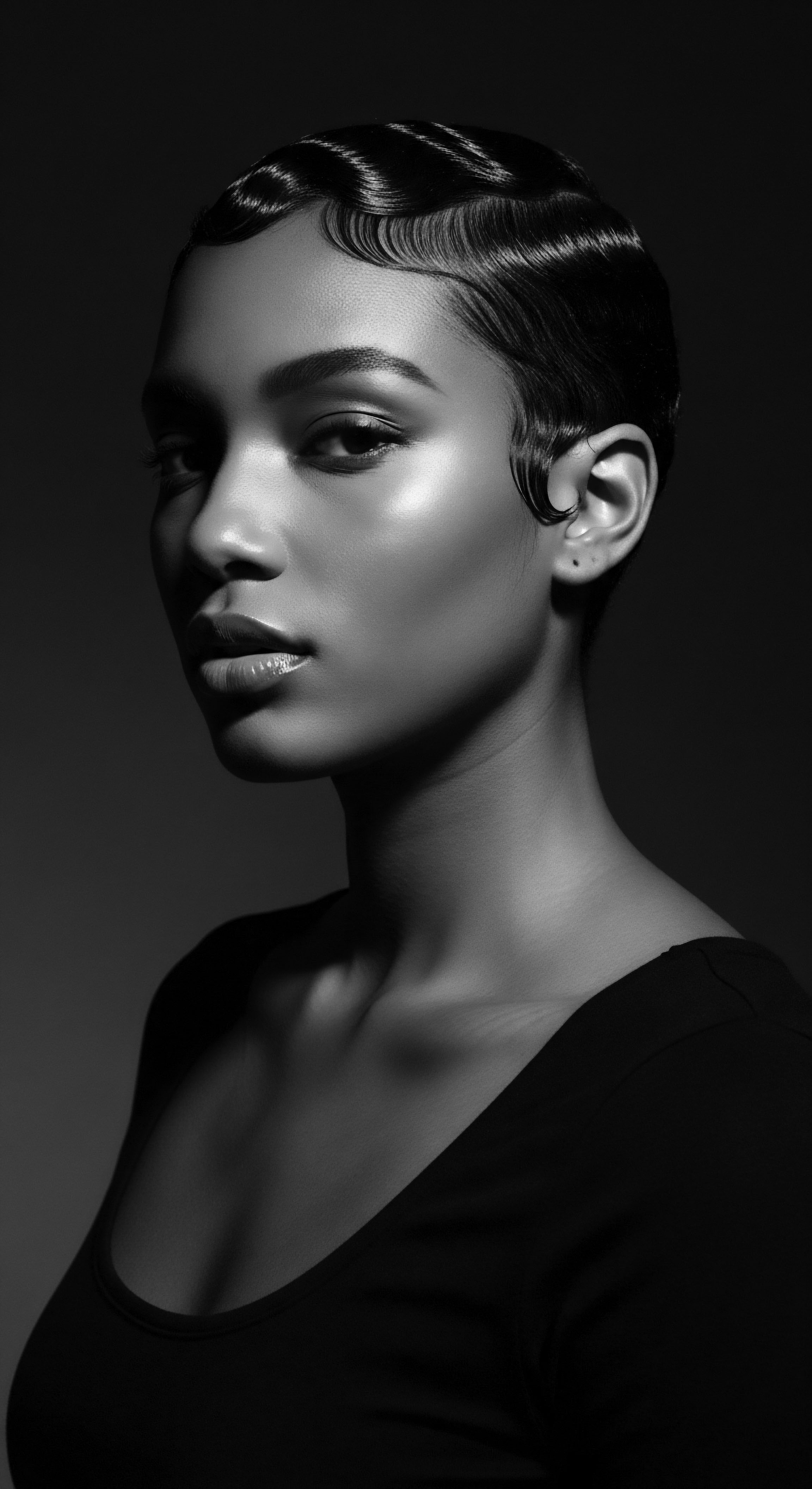
References
- American Academy of Dermatology Association. (2023). What Every Dermatologist Must Know About the History of Black Hair.
- Byrd, A. D. & Tharps, L. L. (2014). Hair Story ❉ Untangling the Roots of Black Hair in America. St. Martin’s Griffin.
- Joyner, M. (1928). Permanent Wave Machine. U.S. Patent 1,693,316.
- Morgan, G. A. (1913). Hair Refining Cream. U.S. Patent 1,088,895.
- Nessler, K. (1906). Apparatus for Waving Hair. U.S. Patent 806,362.
- Porter, L. (2020). The Twisted Strands of Textured Hair History ❉ From Ancient Remedies to Modern Magic. Vertex AI Search.
- Thiagarajah, J. (2024). The Science of Hair Texture ❉ Understanding Curl Patterns. Curl Witch.
- Willatt, A. F. (1938). Permanent Wave. U.S. Patent 2,126,930.
